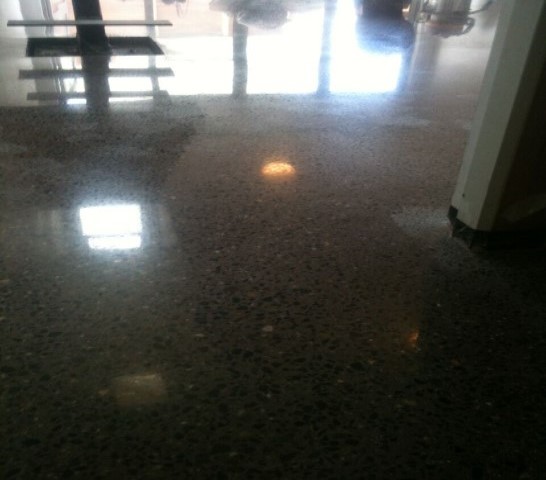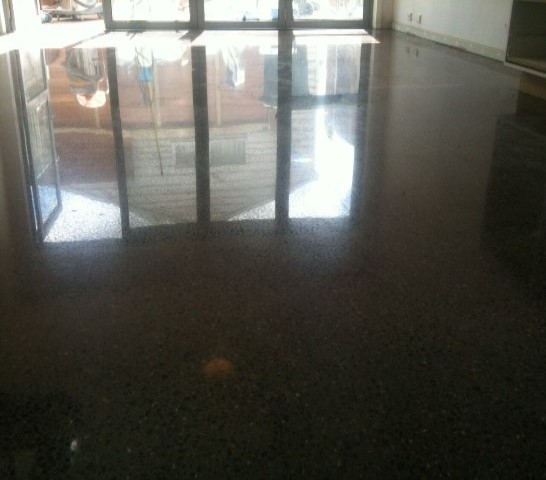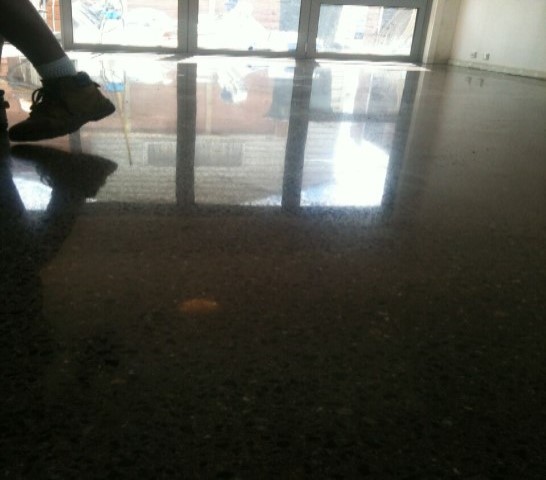SERVICE OVERVIEW
.
Acid stain can be applied to new, old, plain concrete or overlays. Overlays are required to coordinate with colour consistencies. Although they are often called acid stains, acid isn’t the ingredient that Colour’s the concrete. Metallic salts within acid, water based solution reacts with hydrated lime (calcium hydroxide), Colour’s compounds that become a permanent part of the concrete.
Once the acid reacts it remains a permeate stain. There are 8 Colour’s that form the foundation. COLOUR CHART. The acid in chemical stains opens the top surface of the concrete, allowing metallic salts to reach the free lime deposits.
Water from the stain solution then fuels the reaction, usually for about 12 hours. The acid is then removed by specialty products and flushed thoroughly to seize any further reactions. Some factors to consider prior to acid staining include:
No two independent floors are identical. Every stain reaction varies! Used aged concrete (could require an overlay) Moisture content within a slab when staining may cause efflorescence to appear, also alters finish product.
Cements that produce a larger amount of calcium hydroxide during hydration will intensify stain colour, and higher cement contents pro-produces more intense colour’s. Air-entraining or water-reducing admixtures don’t pose a problem. However, calcium-chloride accelerators can cause very mottled, darkened areas, and for this reason aren’t recommended.
Non-chloride accelerators don’t cause this mottling effect. If they’re near the surface, calcium- based aggregates, such as lime-stone, take stain readily and deepen the colour of the concrete above them. Aggregates, such as gravel or blue stone, don’t react with the stain. However, the longer the acid remains in its active form the more intense the stains will remain. Open finishes achieved by floating followed by minimal trowel-ling take more stain and produce denser colour’s than do hard-trowelled surfaces. However, open finishes lose colour faster because the concrete wears away. We recommend staining on hard trowel- led surfaces, because the stain colour lasts longer. “Colour’s on trowel-led surfaces also look richer than those on floated surfaces”. If the surface needs to be sanded, we recommend applying an underlay to compensate the low hydrated lime. Slabs placed in wet weather result in a richer stain colour if the concrete is stained soon after it’s placed. However, wet slabs are more likely to effloresce, lightening the colour and causing a more blotchy effect in areas where the stain doesn’t take due to efflorescing salts hindering penetration.
On sunny days, the concrete can become hot and dry, and the stains won’t penetrate as deeply into the concrete. The continued presence of water will cause the reaction to continue for a long time, and concrete stained blue-green will gradually turn brown or even black. Initially, this provides nice variation to the appearance, but eventually, nearly all the blue-green colour may change to brown and black. For this reason of the possible colour shifts, some manufacturers advise against using these Colour’s for exterior concrete. Interior slabs must be placed on a well-drained base or sub-grade and have a low moisture content before stain is applied. Winter seasons are not suitable for acid staining.
Why Choose Acid Staining Concrete?
Acid Stain is not a paint or coating agent, rather, it’s a coloring process involving a chemical reaction on a cementitious material. A solution made with water, acid and inorganic salts reacts with minerals already present in the concrete, (Free Lime) the result of this reaction is color. It works very well on new or old concrete, and we’ve seen impressive results over decorative overlays as well as self-leveling products. Acid Stain is a very durable product if properly protected with sealer, epoxy or wax, and it can be applied to both interiors and exteriors. *Colour restriction for green!
What makes Acid Stain so attractive? Acid Stain gives concrete a mottled, variegated, marble like look. It creates beautiful colors on concrete, mostly earth tone browns, reddish browns and greens. You can also create your own shades by mixing and matching your available colors, or applying them at different rates. Never expect Acid Stain to be uniform or have an even tone, you’ll get different reactions from slab to slab, and even on the same job you may see different coloration patterns.
Acid Stain can be applied to walks, entrances, driveways, living rooms, bathrooms, patios, high traffic areas and even vertically to any cementitious surface. Or anywhere!
Not every concrete floor is eligible for Acid Stain , though age is not an issue, the shape it’s in is. A smooth concrete surface will yield more attractive results than an old worn one. If the concrete is spalled, the aggregate is exposed or has previously been acid etched, the stain may not “take in” and will not look as desired because the aggregate does not react with the stain, only materials in the concrete paste do. On some applications where the surface is textured, as in stamped concrete or stamped overlays, Acid Stain provides even more depth of color, larger selection and realistic look to the surface.
Preparations for Acid Staining will depend on the condition of the slab, on new concrete the only thing needed is to allow time for curing, (at least three weeks after poured) and some rinsing and scrubbing to remove dirt For old concrete, a thorough cleaning is necessary; any dirt, grease, paint, sealer or curing agent will prevent the stain from penetrating and reacting. It is always a good idea to do a small test area first. So before applying, preparation and thorough planning the job is a good starting point.
Acid Stain application involves very few tools, all you need is assorted sprayers, brushes and a saw with a diamond blade in it for scoring the surface. You can go from a simple design to a very sophisticated project. The more complicated your design, the more labor intensive it will become, but the end results are simply stunning. After the Acid Stain is applied, the floor should be sealed and or waxed to protect the stain and add shine and depth.
The Decorative Concrete Business has been growing very rapidly for the last few years, and Acid Stain has been a big part of this growth. More and more contractors are learning to apply it, and more homeowners, architects and designers are asking for it. The Acid Stain market is miles away from being well known and developed, but it has a very bright and shiny future, and our goal is to help you learn more about this incredible product.





